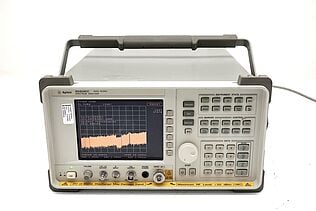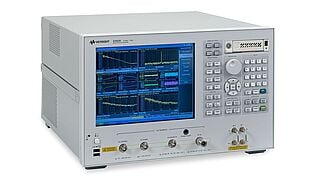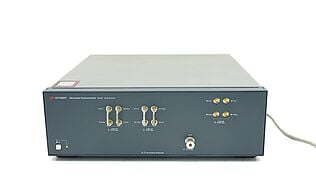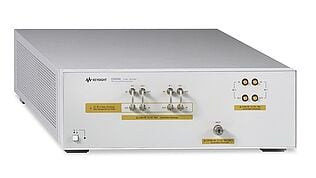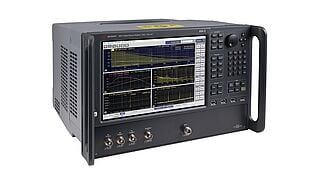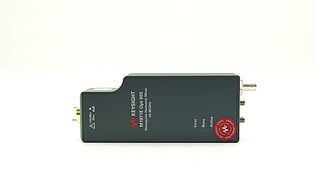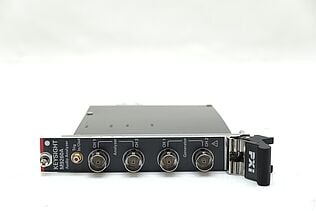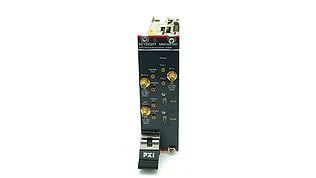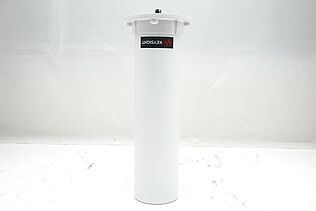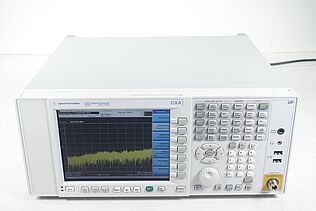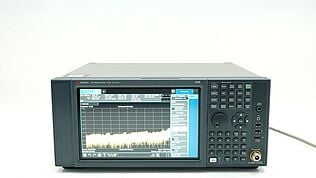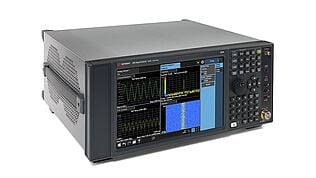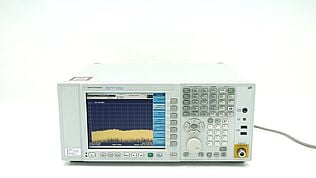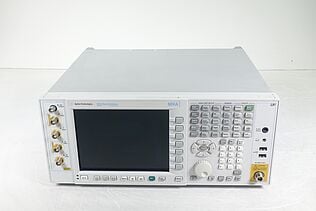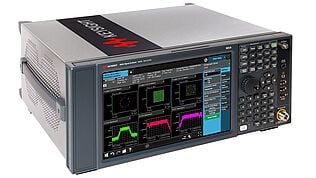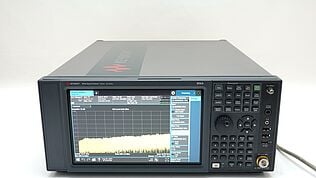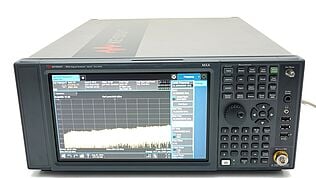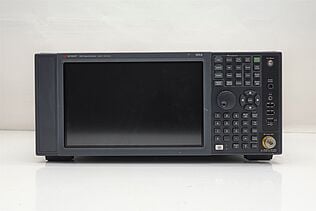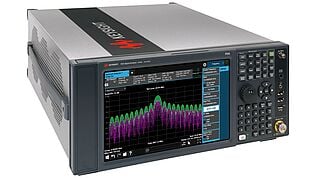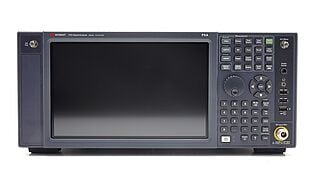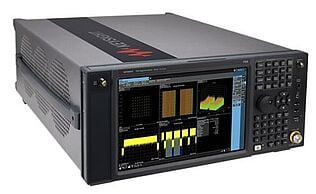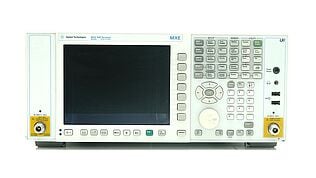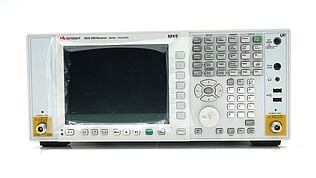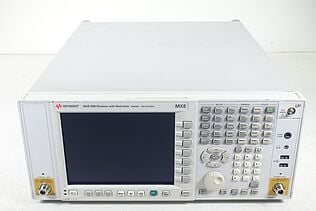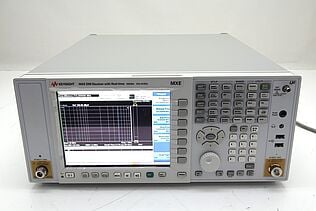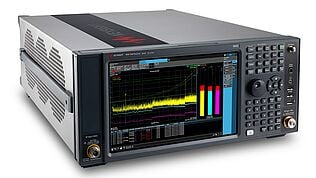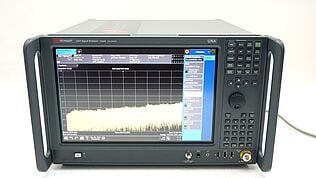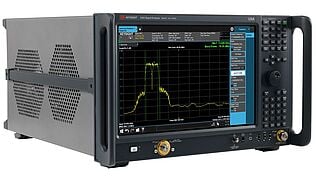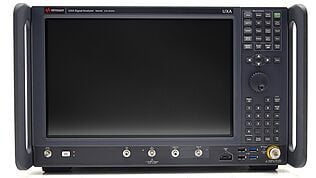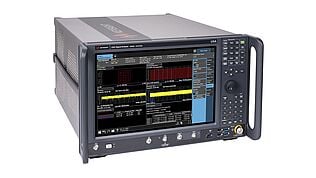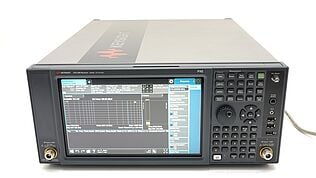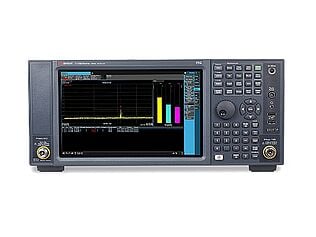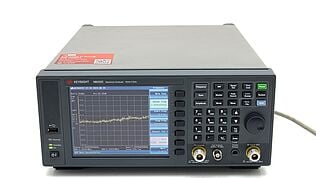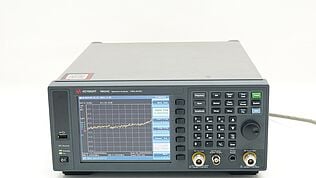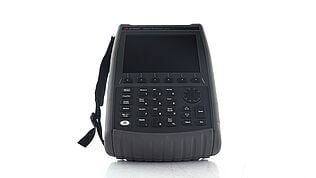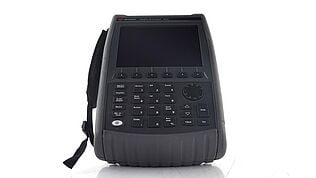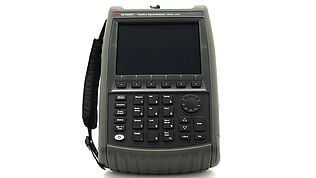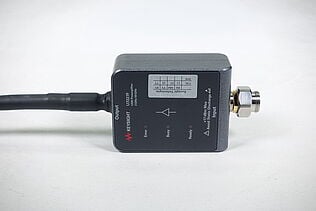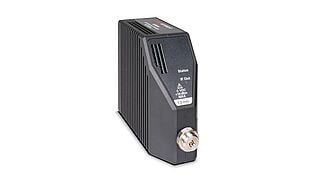- Introduction
- How To Measure RF Power
- Factors Affecting RF Power Measurements
- Best Practices for RF Power Measurements
- Perform Regular Calibrations
- Take Environmental Factors Into Account
- Document Your Measurements
- The Importance of Choosing a High-Quality Spectrum Analyzer
- Spectrum Analyzer Mini Glossary
- Quality and Affordability Combined – Check Out Keysight’s Special Offers on Spectrum Analyzers Today!
- Closing Thoughts From Keysight
- Whenever You’re Ready, Here Are 4 Ways We Can Help You
- Popular Used Oscilloscopes
此页面暂时不提供中文版本。我们计划在不久的将来提供更多内容并支持中文。
感谢您的投票。As an engineer, you are no stranger to the challenges of finding the right tools for your projects. Imagine optimizing a cutting-edge wireless communication system where accurate radio frequency (RF) power measurement is the key to success.
In this situation, you find yourself with the daunting task of selecting the best spectrum analyzer to achieve precise results. Spectrum analyzers provide a wealth of signal power and frequency bandwidth information, making them ideal for radio engineering diagnostics and debugging.
But with so many on the market, how do you choose the correct analyzer and then use it to take measurements accurately?
This relatable scenario echoes the experiences of countless engineers who, like you, navigate the complexities of RF power measurement. With looming deadlines and the risk of project failure, choosing the correct spectrum analyzer that can accurately measure RF power is essential.
This guide will explore how to leverage spectrum analysis to measure RF power. We'll explore critical aspects such as
- How to measure RF power
- Factors affecting RF power measurements
- Best practices for RF power measurements
- The importance of choosing a high-quality spectrum analyzer
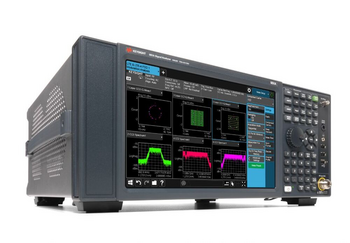
Buy Spectrum Analyzers at a Great Discount
How To Measure RF Power
Before we look at how to take measurements, what exactly is RF power? RF power refers to the signal strength of a radio frequency waveform measured in decibels-milliwatts (dBm). To measure this power level, we use a spectrum analyzer.
A spectrum analyzer uses filters to separate signals based on their properties. It then measures the strength or amplitude of the signal, which is the basis of RF power measurements. It's not as difficult as you might think to measure Rf power. Here's a step-by-step guide on how to measure RF power using a spectrum analyzer.
Preparing the Spectrum Analyzer for the Measurement
Turn on the spectrum analyzer and let it warm up for a few minutes.
Connect the input cable to the input signal port of the spectrum analyzer.
Set the spectrum analyzer's attenuation, reference level, and frequency range according to the signal's expected power level and frequency.
Setting Up the Measurement
Select the appropriate measurement mode and units (e.g., dBm, mW, or μW).
Set the resolution bandwidth (RBW) and video bandwidth (VBW) to achieve the desired frequency resolution and measurement speed.
Choose the appropriate detector type (e.g., peak, average, or sample) based on the characteristics of the signal.
Making the Measurement
Tune the spectrum analyzer to the frequency of interest.
Adjust the span and center frequency to display the signal you want to inspect.
Observe the power level displayed on the spectrum analyzer and record the measurement.
Analyzing the Results
Compare the measured and expected power levels and calculate the difference.
Analyze the spectral characteristics of the signal (e.g., bandwidth, harmonics, spurious emissions) to ensure it complies with relevant standards or specifications.
Repeat the measurement with different settings or locations to verify the accuracy and repeatability of the measurement.
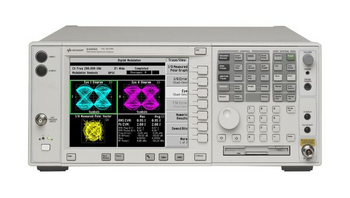
Factors Affecting RF Power Measurements
Several factors will affect the accuracy of RF power measurements. Understanding and accounting for these factors are crucial to ensure you take reliable and accurate measurements. Here are some of the most important factors to account for.
- Calibration. RF power meters and spectrum analyzers require calibration to ensure accurate measurements. Calibration is the process of verifying and adjusting the accuracy of the measurement device using a reference source of known power.
- Temperature. The temperature of the measurement environment can affect the accuracy of RF power measurements. For example, the sensitivity of some measurement devices, such as diode detectors, can vary with temperature.
- Signal quality. The quality and stability of the RF signal can also affect the accuracy of RF power measurements. Signal distortion, noise, and interference can cause inaccurate readings.
Here are some general guidelines for these factors, ensuring you take accurate RF power measurements every time.
- Calibrate your measurement equipment regularly, following the manufacturer's recommendations.
- Maintain a stable and controlled temperature environment during measurements, avoiding sudden temperature changes or temperature gradients.
- Ensure the measured signal is stable, distortion-free, and properly conditioned.
- Use appropriate shielding and grounding techniques to minimize interference and noise.
- Use appropriate averaging or integration settings on the measurement device to account for fluctuations in the measured signal.
Best Practices for RF Power Measurements
Like all other measurements, accurate and reliable RF power measurements require proper equipment setup, careful analysis, and well-planned measurement procedures. Here are some best practices you can use to ensure that your measurements are as accurate as possible!
Use the Correct Equipment
Using the correct equipment directly influences the reliability and precision of your results. As an engineer, you need to be confident that the equipment you use can perform the required tasks efficiently and meet the specific demands of your projects.
Here are some tips on determining that your equipment is up to the task.
Assess your requirements. Identify your project's specific needs, such as the frequency range, dynamic range, sensitivity, and measurement speed. This understanding will help you determine the ideal equipment specifications for your task.
Research available options. Compare various manufacturers' spectrum analyzers and RF power sensors, focusing on the features and specifications that meet your project requirements. Look for reputable brands with a proven track record in the industry to ensure quality and reliability.
Evaluate accuracy and calibration. You want to ensure that your chosen equipment has been calibrated recently and offers the necessary accuracy for your measurements. Check the calibration certificate and verify the calibration standards.
Consider budget constraints. Balance your budget with your equipment requirements. While it is important to invest in high-quality tools, you may not need the most expensive or latest models for your specific needs.
One cost-effective option is to choose used and refurbished equipment from reputable brands like Keysight. Keysight offers a wide range of used and premium used equipment that undergoes rigorous testing, calibration, and quality assurance checks to ensure reliable performance.
By opting to buy from Keysight, you can enjoy the following benefits.
Cost savings. When you buy from Keysight, you get high-quality equipment at a fraction of the price of new, without compromising on performance or reliability!
Reliable performance. Keysight's premium used equipment is carefully inspected, tested, and calibrated to meet original manufacturer specifications, giving you confidence in your RF power measurements.
Warranty and support. Keysight provides warranty and technical support for their equipment, giving you access to assistance when needed.
Choose the Appropriate Measurement Technique
Different measurement techniques may be more appropriate for different applications, depending on various factors such as the frequency range, power level, and modulation scheme of the measured signal. For instance, the accuracy requirements and time constraints may vary for different types of signals.
Generally, there are three primary measurement techniques used in RF power measurements: average, peak, and pulse measurements. Each technique has advantages and disadvantages, and the appropriate method depends on the specific characteristics of the measured signal.
| Measurement | Explanation |
|---|---|
Average measurements | Used to measure the average power of a continuous wave signal over time. This technique is a good option for signals with a constant power level, such as those used in FM radio. Average measurements are often used for compliance testing with regulatory standards, where a threshold for maximum average power is specified. |
Peak measurements | Used to measure a signal's highest instantaneous power level. Use this technique for signals with rapidly changing power levels, such as in digital communication systems. Peak measurements are often used for measuring the maximum power output of an amplifier or transmitter. |
Pulse measurements | Used to measure the power level of signals with short-duration pulses, such as those used in radar or pulse communication systems. This technique involves measuring the peak power level of the pulse and integrating the pulse over time to determine the average power level. Pulse measurements are often used for measuring the peak power and duty cycle of pulse signals. |
Perform Regular Calibrations
Accuracy is vital for taking measurements you can trust, so ensuring that your equipment remains accurately calibrated is essential. To do this, use traceable calibration standards and perform regular calibrations with certified test instruments. Calibrations should be done at least once a year or whenever the instrument has been moved or used in a different environment.
Follow these general steps to calibrate your spectrum analyzer.
Choose a Calibration Reference Source
Select a calibration reference source traceable to a recognized standard, such as a national metrology institute or a calibration laboratory. The calibration reference source should have a power level that covers the expected range of the spectrum analyzer.
Connect the Calibration Reference Source
Connect the calibration reference source to the spectrum analyzer according to the manufacturer's instructions. Ensure the connections are secure and the reference source is powered correctly.
Set Up the Spectrum Analyzer
Set up the spectrum analyzer for calibration by selecting the appropriate measurement mode and units and by adjusting the resolution bandwidth, video bandwidth, and detector type as needed. Set the spectrum analyzer's reference level, attenuation, and frequency range to match the calibration reference source.
Perform the Calibration
Follow the manufacturer's instructions to perform the calibration. The calibration procedure may involve adjusting the calibration factor, the power offset, or other settings on the spectrum analyzer to match the reference source. Some spectrum analyzers may have an automated calibration procedure that guides you through the process step by step.
Verify the Calibration
After the calibration is complete, verify the accuracy of the spectrum analyzer by performing a measurement using the calibrated equipment and comparing it to the reference source. If the measured value matches the reference source, the calibration is successful. If the measured value does not match, adjust the calibration settings and repeat the calibration steps.
Take Environmental Factors Into Account
Did you know that the environment can affect your measurements? Environmental factors such as temperature, humidity, and signal quality can impact the accuracy of RF power measurements.
These factors can cause measurement equipment to drift, introduce noise into the signal or interfere with the measurement process. It is crucial to consider these environmental factors and control them as much as possible.
- Temperature affects the accuracy of RF power measurements, particularly for measurement equipment that relies on sensitive components such as diode detectors. High temperatures can cause measurement equipment to drift or age more quickly, leading to inaccurate readings. To reduce the effects of temperature, maintain a stable and controlled temperature environment during measurements. Avoid sudden temperature changes or temperature gradients that can cause thermal shock to the measurement equipment.
- Similar to temperature, humidity can affect the accuracy of measurements by introducing noise into the measured signal. High humidity can cause electrical components to corrode, leading to measurement errors. To control the effects of humidity, you need to maintain a controlled humidity environment while taking measurements. Avoid exposing the measurement equipment to high humidity or extreme temperature changes that can cause condensation.
- Signal quality also drastically affects measurement accuracy, particularly for signals with distortion, noise, or interference. To help with this, use appropriate shielding and grounding techniques to minimize interference and improve sensitivity (noise floor). Ensure you always use appropriate averaging or integration settings on the measurement device to account for fluctuations in the measured signal.
Document Your Measurements
The chances are you are already documenting your measurements and results. If not, it's important to do so. Regardless of the application you are working on, you should document all relevant information about the measurement process, such as calibration settings, environmental factors, signal strength, etc.
Here are some reasons why documenting your RF power measurements is important.
- Track equipment performance. By documenting your measurements, you can track the performance of your measurement equipment over time. Tracking performance allows you to identify any trends or deviations in the accuracy of your measurement equipment and take corrective action if necessary.
- Identify sources of error. Documenting your measurements will help you identify potential sources of error or drift in the measurement process. By analyzing the data and documentation, you can pinpoint areas where the measurement process could be improved, such as environmental factors, calibration procedures, or measurement techniques. Doing this saves you a lot of headaches and time later on.
- Verify compliance. Documenting your measurements provides a record of the measurement process and results, which helps verify compliance with regulations or specifications. This compliance is particularly important in telecommunications, aerospace, and defense industries, where compliance with regulations and standards is a top priority.
To help you document your RF power measurements, try the following tips that fellow engineers find helpful.
- Keep a log of all measurements, including the date, time, frequency, power level, measurement device, calibration reference source, and other relevant information. This log needs to be kept up-to-date.
- Record your measurements, including any calibration procedures, techniques, and environmental factors. These records will help you identify potential sources of error or drift in the measurement process.
- Save your measurement data and results, including any graphs, charts, or tables. This data should be appropriately labeled and stored somewhere safe, ideally with backups in case of loss or damage.
The Importance of Choosing a High-Quality Spectrum Analyzer
Have you ever used test equipment that gave you results you couldn't trust? Did you have to take multiple measurements to be confident in the results? Being in this situation is far from ideal. You waste precious time and risk missing vital trends or patterns in the data, resulting in incorrect decisions.
Remember, quality matters when making accurate measurements, so you want to choose a high-quality spectrum analyzer for your RF power measurements. A high-quality analyzer provides reliable and precise results every time, saving you time and money in the long run.
When purchasing a spectrum analyzer, it's essential to choose one that has been properly calibrated and meets the requirements of your application. Good features to look for include
Wide dynamic range
Good noise rejection
Low phase noise
Fast sweep speed
The ability to store measurements for later analysis
Investing in a high-quality spectrum analyzer will ensure reliable and accurate results every time, providing you with the data you need to make informed decisions. You'll be able to get more out of your measurements, saving you time and money along the way!
At Keysight, we understand the importance of accurate and reliable measurements. That's why our spectrum analyzers have the best technologies to ensure superior performance, reliability, and accuracy.
If you are looking for ease of use, then our spectrum analyzers are the best choice for your RF power measurements. With our intuitive user interface and one-button measurement simplicity, you can start making measurements in no time.
Make the best choice for your RF power measurements by choosing Keysight's spectrum analyzers!
Spectrum Analyzer Mini Glossary
What Is Acoustic Measurement?
An acoustic measurement is a sensor mode that captures the magnitude of the frequency spectrum over an interval of time using a linear array transducer used in sound analysis.
What Is Aliasing?
Aliasing is an effect that causes a signal to be incorrectly identified as another signal.
What Is Distortion?
Distortion is the presence of unwanted frequencies that were not present in the original signal.
What Is Frequency Response?
Frequency response represents a signal in terms of power over frequency.
What Is Sample Rate?
Sample rate refers to the speed at which a spectrum analyzer collects data. It can also refer to the number of samples per second displayed on the screen or recorded in memory.
What Is Transient Response?
Transient response refers to the behavior of a signal after a change from equilibrium or after it has been turned off.
Quality and Affordability Combined – Check Out Keysight’s Special Offers on Spectrum Analyzers Today!
If you are an engineer or technician working with RF power, you need a reliable and accurate spectrum analyzer that is up to any task your busy schedule throws at it.
Keysight offers reliable, high-quality spectrum analyzers with all the features you need to make accurate measurements. Our spectrum analyzers are renowned for their reliability, accuracy, and ease of use – making them the perfect choice for your RF power measurements.
With our special offers, you can get top-grade equipment at a price that will surprise you! We believe that quality and affordability should go hand-in-hand. Our team has been helping engineers and technicians choose the best spectrum analyzers for years and are proud to provide you with the best tools available.
With a Keysight spectrum analyzer, you can optimize your radio frequency testing and analysis in no time. Make the right choice for your RF power measurements, and take advantage of our special offers today!
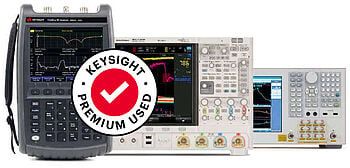
Closing Thoughts From Keysight
This article has looked at how to use a spectrum analyzer to measure RF power, the best practices for taking measurements, and why choosing a high-quality analyzer is so important. This information will help you buy the perfect spectrum analyzer for your needs.
At Keysight, we are one of the leading manufacturers of spectrum analyzers. Our products are well known for their quality and reliability.
We are currently offering a special deal on refurbished premium spectrum analyzers. This is a great opportunity to get your hands on a top-of-the-line instrument at a very reasonable price. So don't wait – head over to our used equipment page and buy a premium spectrum analyzer today!

Whenever You’re Ready, Here Are 4 Ways We Can Help You
- Browse our premium used spectrum analyzer offers
- Call tech support US: 1 800 829-4444 Press #, then 2. Hours: 7am – 5pm MT, Mon– Fri
- Talk to our sales support team by clicking the icon (bottom right corner) on every offer page
- Talk to your account manager about your specific needs

Subscribe to Get Our Latest News, Updates, and Articles.
Popular Used Oscilloscopes
Keysight Used Oscilloscopes offers a wide range of industry leading pre-owened oscilloscopes, ranging from older generation Agilent oscilloscopes to the newest Keysight oscilloscope models. So whether you are a fist time buyer, replacing a model like-for-like or looking for upgrade – we have something for you.



